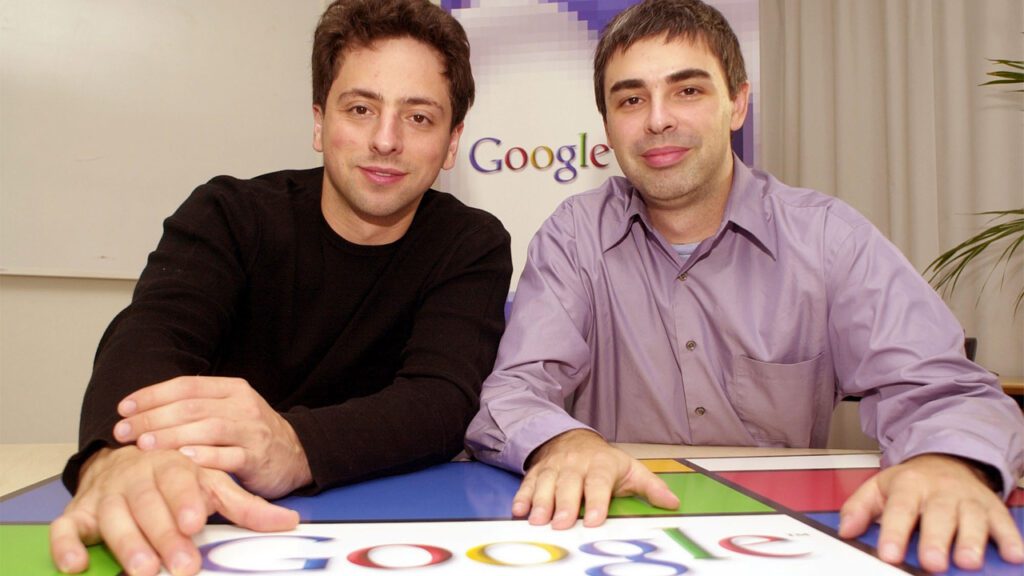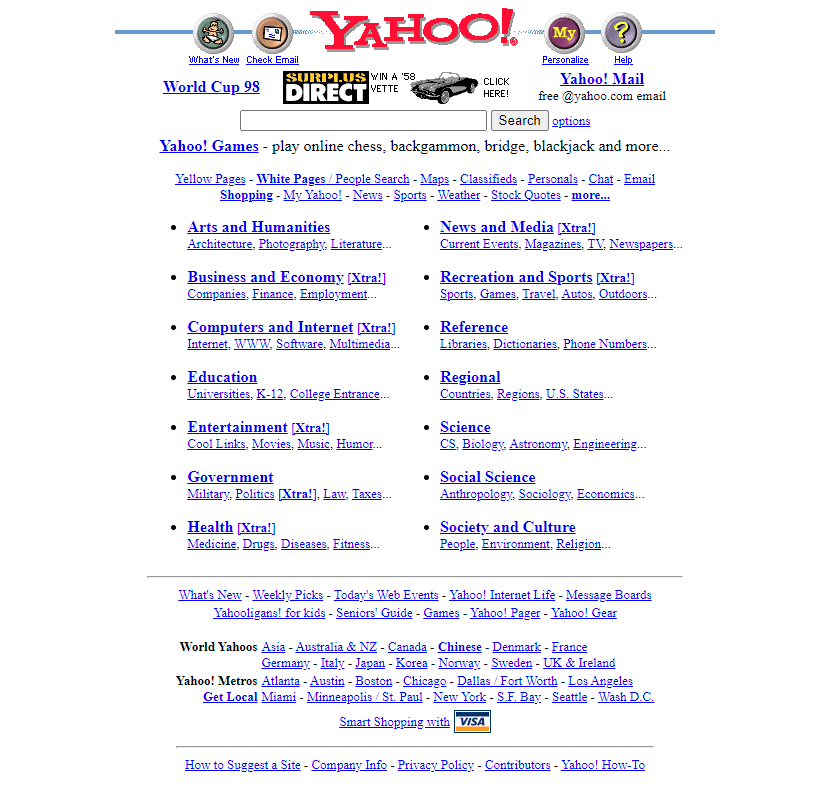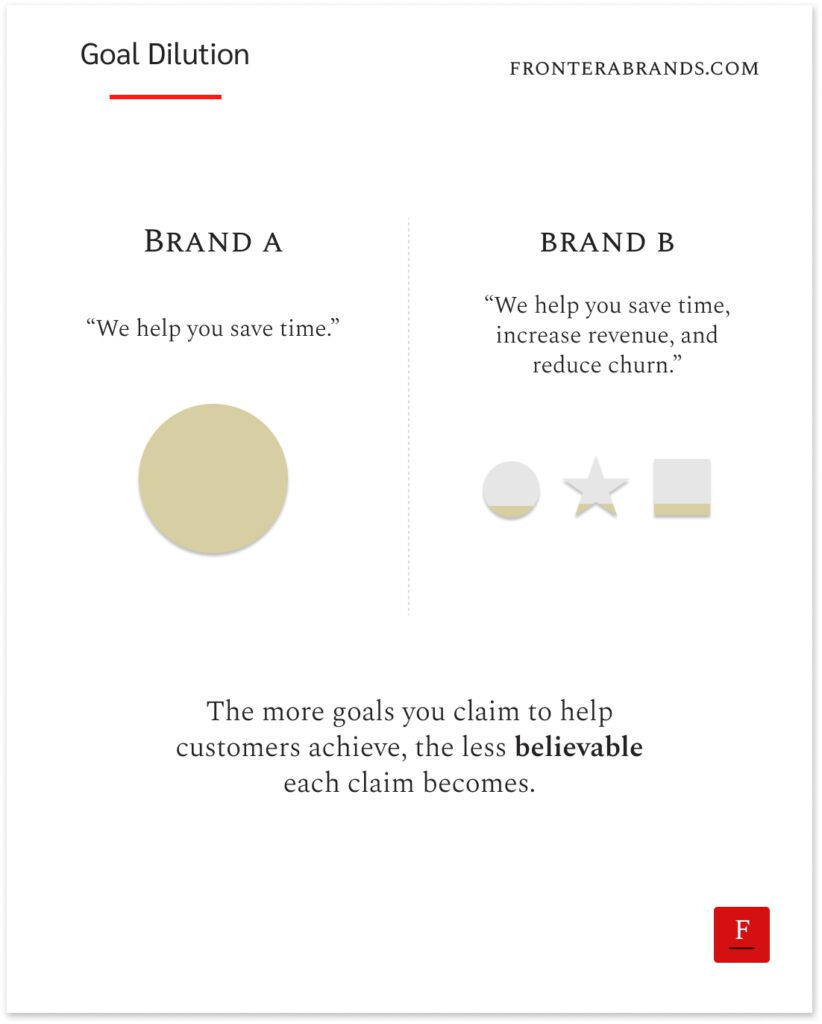In 1996, two Stanford Ph.D. students Larry Page and Sergey Brin realized the largest internet search engines were doing it wrong.
Yahoo and MSN manually curated sites like a directory.
So you could only search for certain things.
AltaVista had a slightly more advanced algorithm.
It ranked sites depending on how many times your search term appeared on a site.
But if the word “carrot” appears on a page 20 times, that doesn’t mean that’s the page you are looking for.
So they didn’t have good results either.
The real challenge was ranking millions of sites on the internet.
Not only based on your search term but also based on the site’s credibility.
And these two Stanford Ph.D. students found an ingenious way to overcome that challenge.
They realized academia had already found a solution to the same problem: references.
The more citations a paper has, the more credible it is.
And if the papers that refer to you are also credible, even better.
So they created an algorithm that scoured the web and ranked sites based on the number and quality of links they had from other sites.
Combining that ranking with the users’ search terms and a few other factors, their engine had the most accurate search results.
They called their algorithm PageRank, and their company Google.

But they made an unusual design decision when launching Google in 1998.
The search sites of the 90s era were mostly portals.
They had everything — news, games, stock market tracking, chat…
So when you went to these portals, you landed on a cluttered page with a little search box in the corner.
Page and Brin thought all that random stuff was distracting.
Google’s difference was the quality of the search results.
To prove that difference to visitors, they decided to make their site only about search.
So they only put a search box at the center of the page and published the site.

The internet users of the day were surprised when they saw Google.
When they went on the site, they had only one thing to do — fill in a search term.
So they expected it to be good at finding what you are looking for.
Because that was the only thing Google did.
And Google’s PageRank algorithm delivered on that expectation.
So they kept using Google for search instead of going to other websites that had search as one of their many features.
You know the rest of the story.
Googling became a verb and Google became a giant.
27 years later, Google still has the same home page with minor changes.
A single goal beats multiple goals
Could Google have succeeded against the dominant internet companies of the day if it was also launched as a portal?
Who knows.
But we know one thing.
Yahoo and other search portals tried to help customers achieve many goals.
Google wanted to help them achieve one goal.
And they showed it to visitors with their interface.
So when people visit Google, they see one clear promise: to find what they are looking for on the internet.
The others?
They promised everything.
Stay up-to-date with news, have fun with games, talk to strangers with chat… and search for what you are looking for.
So each claim was less believable.
Ying Zhang, Ayelet Fishbach, and Arie Kruglanski found the concept in their research in 2007 and called it goal dilution.
The more goals you claim to help customers achieve, the less believable each claim becomes.
Let’s say Brand A tells customers they help them save time.
And Brand B tells customers they help them save time, increase revenue, and reduce churn.
Guess which one is more believable?
Yes, research clearly shows customers believe brand A is more likely to save them time.
Because it’s the only goal they serve for.
And brand B dilutes its value by talking about different, loosely related outcomes.

Goal dilution is a common mistake many brands make without realizing it.
They know all the different things they can deliver to customers.
So they want to talk about everything.
Different problems they can solve, different contexts their brand can fit in, different outcomes they help customers get…
The funny thing is, it doesn’t even matter if you can truly deliver on all of these.
The problem is customers don’t believe it.
And the quality of your product or service becomes irrelevant.
So how can you avoid goal dilution to make your brand more believable?
Here are two main ways:
1. Help customers achieve one main goal
This is obvious.
Yes, your product or service can help customers with many things.
But you can’t pull customers in different directions.
You have to make sacrifices.
You have to choose.
And when you choose your goal, everything else has to support it.
Phil Barden gives a good example in his book Decoded.
Some time ago, Volvo and Mercedes added automatic braking to their cars.
But these brands serve different customer goals.
Volvo is for safety.
And Mercedes is for superiority.
So they announced this new feature with ads in their own way.
Volvo showed how this new feature avoided crashes and kept the family safe inside the car.
They reinforced their brand’s goal — safety.
But Mercedes made a different ad.
When a Mercedes driver is on the road, suddenly Grim Reaper appears in the next seat smiling and he says: “Sorry.”
The driver gets scared.

And when the driver looks back to the front, a construction vehicle is there cleaning up the broken trees on the road.
Mercedes’ new braking feature stops the car and saves the driver’s life.
This time the driver turns to Grim Reaper, smiles, and says: “Sorry.”
We see Grim Reaper disappointed.
And what does this ad imply?
The Mercedes driver is superior even to death.
So it supports Mercedes’ brand goal — superiority.
The same feature.
But different messages.
You see how even the same feature is communicated with different messages, because of different brand goals.
So think about your brand.
What’s the main problem you solve for customers?
What’s the main emotional/social outcome you help them achieve?
We talked about Trigger-to-Outcome Journey.
Prioritize and get clear on the goal you help customers achieve.
Be known with one thing.
So customers believe you can deliver on it.
2. Keep your messaging tight
The more I interact with different businesses, the more I see the importance of clarity.
Clarity around the value the brand creates for its customers.
Clarity around what to say about that value.
Because when there is no clarity, everybody pulls the brand in random directions.
And customers notice it.
You want an example?
Think about a business with a decent product or service.
When their different teams don’t have clarity around what to say about the value of their brand, this happens:
Their content team talks about the value in one way.
Their sales team talks about other benefits.
And their web page tells an unrelated story.
So customers receive different signals in each interaction with the brand.
It dilutes the brand’s value.
Because when you don’t have a unified, consistent message across channels, you become a victim of goal dilution.
That’s why having a clear messaging strategy is important.
By the way, I get this often.
“But don’t we have to experiment with our messaging?”
Well, the answer is no.
Because messaging is what you say to articulate your positioning.
Hence it should already be born out of insights from the customer, company, and competition — not from experiments.
You can experiment with copywriting — which is about how you say it.
So define your core messages that support your main customer goal.
And only convey those messages on every channel.
Keep your messaging tight.
Let your competitors claim to be the best in everything.
Customers will believe you.
–
Enjoyed this article?
Then you’ll love the How Brands Win Newsletter.
Get the “7 Positioning Sins That Cost B2B Brands Millions” guide when you join. It’s free.
